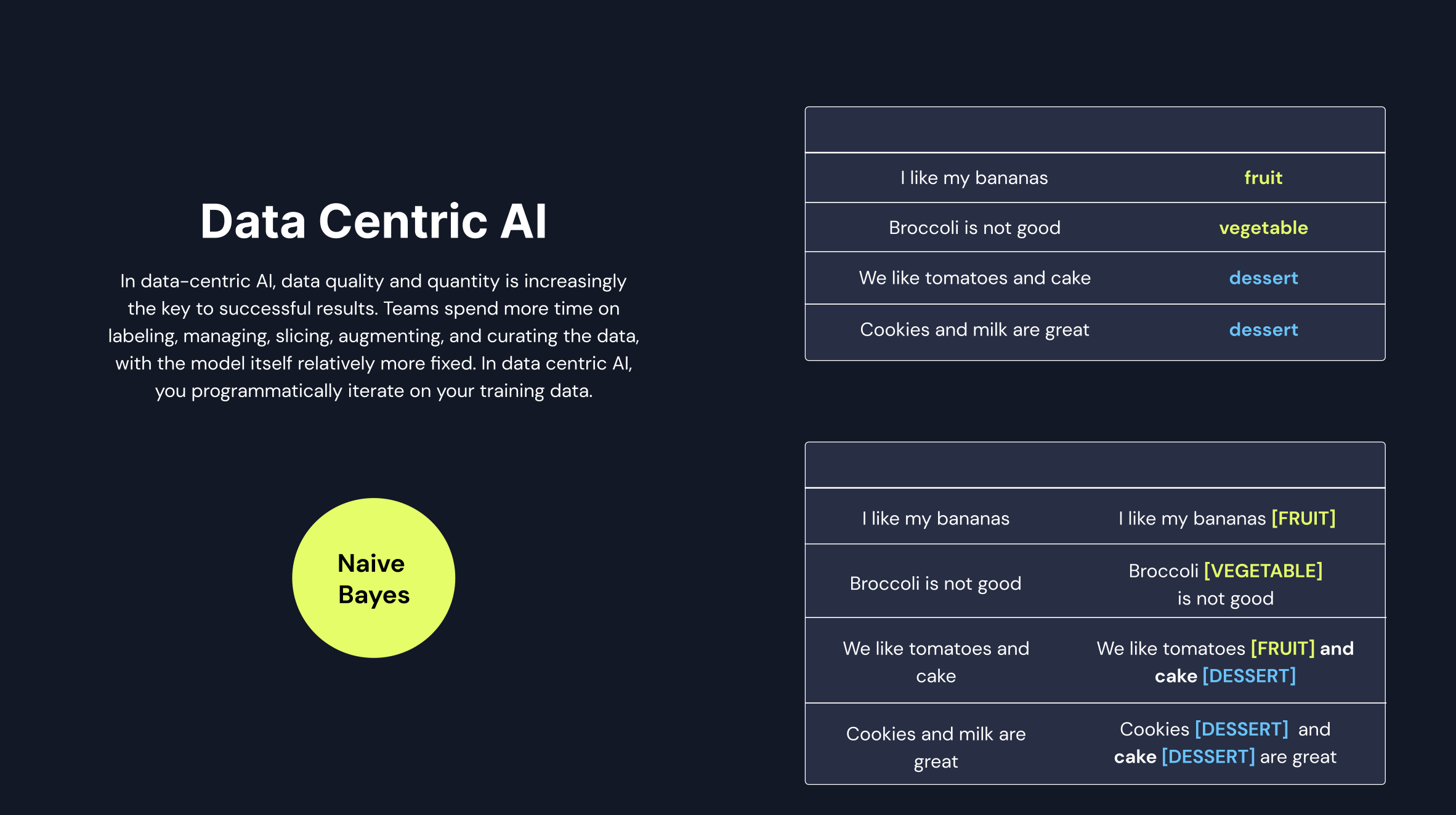Data-Centric AI
In Data-Centric AI, the focus is primarily on the quality and quantity of the training data. Teams invest significant effort in labeling, managing, slicing, augmenting, and curating the data, considering it to be the key to successful results. The model itself is relatively more fixed, with more emphasis on programmatically iterating on the training data.
Data-Centric AI acknowledges that the quality and diversity of the training data have a significant impact on model performance and generalization. Teams invest substantial effort in continuously improving and refining the training datasets to achieve better results.

Text Classification Example
Let's consider a simple example of text classification to understand Data-Centric AI in action. Suppose we have the following training data:
| Text | Label |
|---|---|
| I like bananas | Fruit |
| Broccoli is not good | Vegetable |
| We like tomatoes and cake | Dessert |
| Cookies and milk are great | Dessert |
In Data-Centric AI for classification, the training data is meticulously curated, and various strategies are employed to improve its quality. For example, the data might be preprocessed, cleaned, and augmented to enhance the diversity and representativeness of the dataset.
Named Entity Recognition
Named Entity Recognition (NER) can also benefit from a Data-Centric AI approach. Let's assume we have the following entities:
- Fruits: {Apple, Orange}
- Vegetable: {Zucchini, Spinach}
- Dessert: {Chocolate, Ice Cream}
- Beverage: {Water, Juice}
| Entity_Text | Entity_Label |
|---|---|
| I like bananas | I like bananas [FRUIT] |
| Broccoli is not good | Broccoli [VEGETABLE] is not good |
| We like tomatoes and cake | We like tomatoes [FRUIT] and cake [DESSERT] |
| Cookies and milk are great | Cookies [DESSERT] and milk [BEVERAGE] are great |
In Data-Centric AI for NER, the focus is on acquiring high-quality annotated datasets that cover a wide range of entity types. Data is meticulously labeled, validated, and curated to ensure accurate and diverse annotations. Various techniques, such as data slicing, data augmentation, and active learning, can be employed to enrich and enhance the training data.
Summary
In summary, Data-Centric AI recognizes the crucial role of high-quality and diverse training data in achieving successful AI outcomes. It emphasizes the importance of data labeling, management, augmentation, and curation, with the model itself being relatively more fixed. By programmatically iterating on the training data, Data-Centric AI aims to optimize the performance and generalization of AI models.